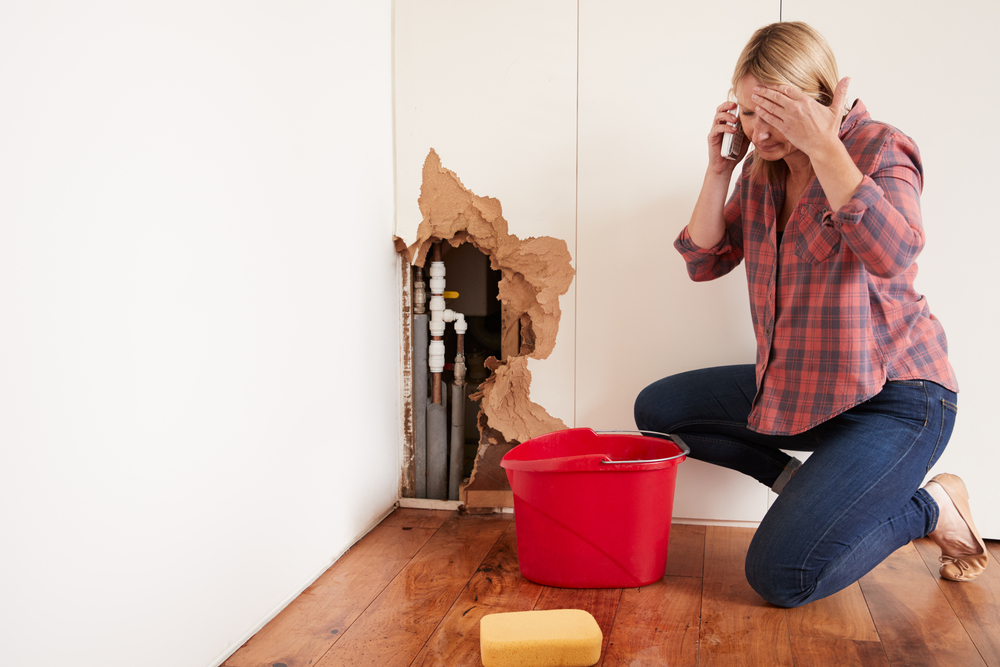Water damage can wreak havoc on your Spokane home, causing structural issues, health hazards, and financial burdens. While some water damage is easily visible, there are instances where it lurks unseen, causing significant problems over time. Identifying hidden water damage is crucial for mitigating its effects and preventing further deterioration of your property. In this article, we’ll explore effective strategies for uncovering hidden water damage in your Spokane home.
Signs To Watch For:
- Musty Odors: One of the common signs of hidden water damage is a musty or moldy odor. Even if you can’t see any visible signs of water damage, a persistent musty smell could indicate the presence of mold or mildew thrive in damp areas.
- Discoloration And Stains: Keep an eye out for discoloration or stains on walls, ceilings, or floors. Water stains often appear as dark spots or patches, indicating previous water intrusion. Even if the area appears dry now, these stains can signal ongoing moisture problems.
- Peeling Paint Or Wallpaper: Wallpaper and paint can flake off walls exposed to moisture. If you notice bubbling, cracking, or peeling in these materials, it could be a sign of water damage lurking beneath the surface.
- Warped Or Sagging Materials: Water can warp or distort building materials such as drywall, wood flooring, or ceiling tiles. Inspect these surfaces for any signs of warping, sagging, or buckling, as these abnormalities suggest water damage.
- Soft Or Spongy Flooring: Walk around your home and pay attention to how the floors feel underfoot. Soft or spongy spots in flooring materials like wood, laminate, or vinyl could indicate water damage and underlying structural issues.
- Visible Mold Growth: While mold can sometimes hide behind walls or in hidden areas, it may also become visible in certain instances. Look for patches of mold growth on walls, ceilings, or other surfaces, especially in areas prone to moisture, such as bathrooms, kitchens, or basements.
- Water Meter Reading: Monitoring your water meter readings can help detect hidden leaks within your plumbing system. Shut off all water sources in your home, then check the water meter. There may be a concealed leak if the meter keeps showing water use.
- High Water Bills: If your water bill spikes without any change in your water use, it could be a sign of a concealed leak. Keep track of your water bills and investigate any significant spikes that cannot be attributed to seasonal changes or other factors.
Steps To Take:
- Inspect Attics And Crawl Spaces: These areas are often overlooked but can harbor hidden water damage. Check for signs of leaks, condensation, or mold growth in these spaces, paying particular attention to roof leaks or plumbing lines.
- Check Behind Appliances: Over time, appliances like washing machines, dishwashers, and refrigerators can develop leaks. Pull these appliances away from the wall periodically to inspect for signs of water damage or moisture buildup.
- Examine Exterior Walls: Inspect the exterior walls of your home for cracks, gaps, or damaged siding that could allow water infiltration. If you want to keep water out of your home, you need to seal any cracks or holes.
- Test For Moisture: Locate any concealed moisture in your walls, ceilings, or floors by using a moisture meter. Focus on areas where you suspect water damage may be present, such as near plumbing fixtures or around windows and doors.
- Schedule Professional Inspection: Hiring a professional for water damage restoration in Spokane is a good option if you suspect concealed water damage but can’t find the source. These experts have the knowledge, tools, and experience to locate and address hidden water damage effectively.
Conclusion
To ensure the safety of your Spokane family and your home’s structural integrity, it is crucial to locate any concealed water damage. By paying attention to subtle signs of water damage and conducting thorough inspections, you can uncover hidden issues before they escalate into major problems. Keep in mind that reducing the effects of water damage and protecting your home’s safety and worth requires early identification and quick response.





